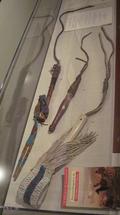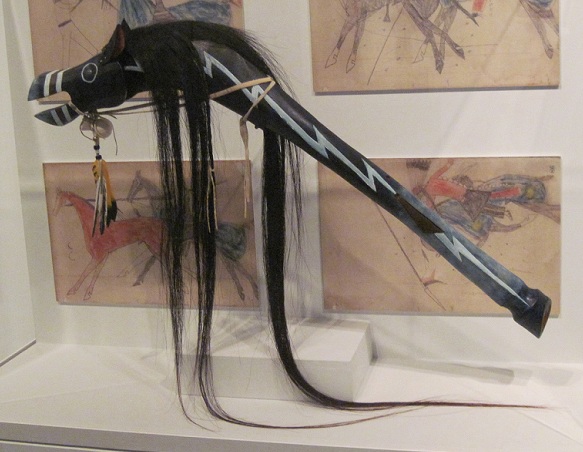Subject: wic'âša 'shirt wearer' warrior
Culture: Lakota Sioux
Setting: Plains Wars, northern Great Plains 1862-1890
Object: ridinig crop / quirt / coup stick
Peabody Museum of Archaeology and Ethnology > Wiyohpiyata - Lakota Images of the Contested West *
"BLUE ROANS ARE WAR HORSES Lakotas favored blue roans as war horses, as their color indicated the strength and speed of the sky powers. Many of the ledger drawings record the exploits and finally, the death, of a blue roan horse with a white front leg. Lakota men carved and painted effigies of such horses, and recounted their experience while they danced. "Butch Thunder Hawk made this one 'to honor and memorialize a great war pony -- I know he was treasured by his owner and that all of the people in the village respected him as a sacred being.'"
* Peabody Museum of Archaeology and Ethnology > Wiyohpiyata - Lakota Images of the Contested West
"TRAILS In 1846, future historian Francis Parkman (Harvard class of 1844) left Boston to explore the new overland route from Missouri to Oregon. That summer, Parkman and his cousin Quincy Adams Shaw joined about 5,000 emigrants traveling on foot, horseback, or wagon across Nebraska, Colorado, and Wyoming to California and Oregon. Near Fort Laramie, Wyoming, he spent several weeks living among a band of Oglala Lakotas, from whom he acquired this elk horn quirt, or horse whip.

